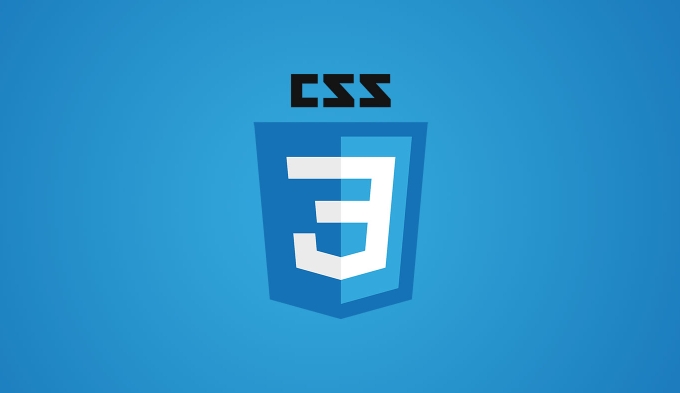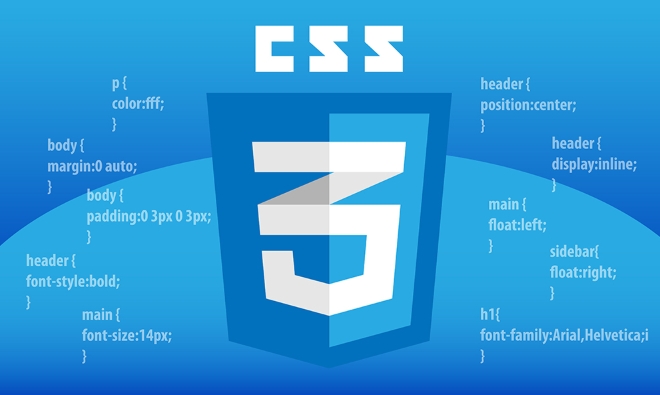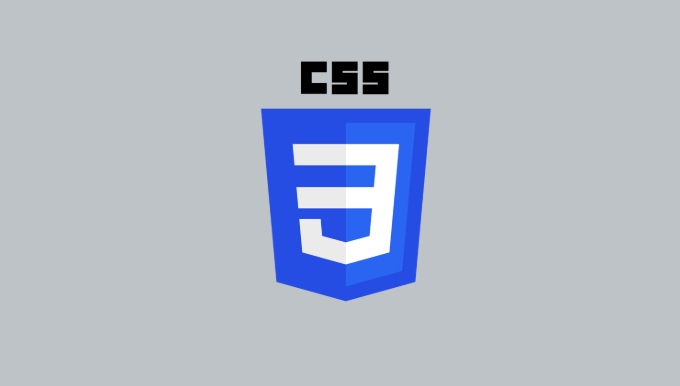The aspect-ratio attribute of CSS is used to control the aspect-ratio ratio of an element. Its syntax is aspect-ratio: width / height;, for example.box { aspect-ratio: 16 / 9;} means that the element always maintains a ratio of 16:9. 1. It is often used to maintain proportions in image containers, such as square avatar frames; 2. Responsive video embedding to keep the iframe at a 16:9 ratio; 3. Notes include: only effective when not fixed width or one in high school, not suitable for inline elements, different from object-fit, mainstream browsers have already supported, but older versions may need to be replaced by padding techniques. Mastering aspect-ratio simplifies proportional control in responsive layouts.

aspect-ratio attribute of CSS is used to control the aspect ratio of an element, which allows you to easily maintain a specific aspect ratio of an element at different sizes. This is especially useful in responsive designs, such as when embedding videos, image displays, or grid layouts.

How to use aspect-ratio
The syntax of this property is simple:
element {
aspect-ratio: width / height;
}For example:

.box {
aspect-ratio: 16 / 9;
} Indicates that the width and height of this .box element always maintain a ratio of 16:9. If the width is 320px, the height will automatically adjust to 180px (because 320 ÷ 16 × 9 = 180).
It should be noted that if you set width and height at the same time, the browser will decide whether to apply aspect-ratio based on these two values. That is, aspect-ratio will only work if you don't have the dimensions that fix one of the directions.

Common usage scenarios
1. Keep the picture container proportion
You may want a picture container to keep a certain proportion of the content displayed no matter how the screen changes, so that the page looks neat. For example, make a square avatar frame:
.avatar {
aspect-ratio: 1 / 1;
width: 100px;
} This ensures that .avatar is a 100×100 square.
2. Responsive video embedding
When embedding YouTube videos in web pages, it is often necessary to make the iframe automatically adapt to different device widths but still maintain a 16:9 ratio:
<div class="video-container"> <iframe src="..."></iframe> </div>
Cooperate with CSS:
.video-container {
aspect-ratio: 16 / 9;
}
.video-container iframe {
width: 100%;
height: 100%;
}In this way, no matter how wide the parent container is, the iframe will scale to scale.
Notes and compatibility
- Browser support : mainstream modern browsers have already supported
aspect-ratio, including Chrome, Edge, Firefox and Safari. But if you still need to be compatible with some old versions, you may need to use padding techniques to make compatibility. - Comparing with traditional padding techniques : we used to use "padding-top percentage" for proportional control, but now with
aspect-ratio, the code is more concise and intuitive. - It cannot be used on inline elements : In-line elements such as
<span></span>are not suitable for setting this attribute. - Don't be confused with
object-fit:aspect-ratiocontrols the size ratio of the entire element, whileobject-fitcontrols how the content (such as pictures) is displayed in the container.
Basically that's it. Mastering aspect-ratio can help you save a lot of trouble in manually calculating width and height, especially when making responsive layouts.
The above is the detailed content of Explain the CSS `aspect-ratio` property. For more information, please follow other related articles on the PHP Chinese website!

Hot AI Tools

Undress AI Tool
Undress images for free

Undresser.AI Undress
AI-powered app for creating realistic nude photos

AI Clothes Remover
Online AI tool for removing clothes from photos.

Clothoff.io
AI clothes remover

Video Face Swap
Swap faces in any video effortlessly with our completely free AI face swap tool!

Hot Article

Hot Tools

Notepad++7.3.1
Easy-to-use and free code editor

SublimeText3 Chinese version
Chinese version, very easy to use

Zend Studio 13.0.1
Powerful PHP integrated development environment

Dreamweaver CS6
Visual web development tools

SublimeText3 Mac version
God-level code editing software (SublimeText3)
 What are common CSS browser inconsistencies?
Jul 26, 2025 am 07:04 AM
What are common CSS browser inconsistencies?
Jul 26, 2025 am 07:04 AM
Different browsers have differences in CSS parsing, resulting in inconsistent display effects, mainly including the default style difference, box model calculation method, Flexbox and Grid layout support level, and inconsistent behavior of certain CSS attributes. 1. The default style processing is inconsistent. The solution is to use CSSReset or Normalize.css to unify the initial style; 2. The box model calculation method of the old version of IE is different. It is recommended to use box-sizing:border-box in a unified manner; 3. Flexbox and Grid perform differently in edge cases or in old versions. More tests and use Autoprefixer; 4. Some CSS attribute behaviors are inconsistent. CanIuse must be consulted and downgraded.
 Describe the `vertical-align` property and its typical use cases
Jul 26, 2025 am 07:35 AM
Describe the `vertical-align` property and its typical use cases
Jul 26, 2025 am 07:35 AM
Thevertical-alignpropertyinCSSalignsinlineortable-cellelementsvertically.1.Itadjustselementslikeimagesorforminputswithintextlinesusingvalueslikebaseline,middle,super,andsub.2.Intablecells,itcontrolscontentalignmentwithtop,middle,orbottomvalues,oftenu
 What is the accent-color property?
Jul 26, 2025 am 09:25 AM
What is the accent-color property?
Jul 26, 2025 am 09:25 AM
accent-color is an attribute used in CSS to customize the highlight colors of form elements such as checkboxes, radio buttons and sliders; 1. It directly changes the default color of the selected state of the form control, such as changing the blue check mark of the checkbox to red; 2. Supported elements include input boxes of type="checkbox", type="radio" and type="range"; 3. Using accent-color can avoid complex custom styles and extra DOM structures, and maintain native accessibility; 4. It is generally supported by modern browsers, and old browsers need to be downgraded; 5. Set accent-col
 How to compile SCSS to CSS?
Jul 27, 2025 am 01:58 AM
How to compile SCSS to CSS?
Jul 27, 2025 am 01:58 AM
InstallDartSassvianpmafterinstallingNode.jsusingnpminstall-gsass.2.CompileSCSStoCSSusingthecommandsassinput.scssoutput.css.3.Usesass--watchinput.scssoutput.csstoauto-compileonsave.4.Watchentirefolderswithsass--watchscss:css.5.Usepartialswith_prefixfo
 How to change text color in CSS?
Jul 27, 2025 am 04:25 AM
How to change text color in CSS?
Jul 27, 2025 am 04:25 AM
To change the text color in CSS, you need to use the color attribute; 1. Use the color attribute to set the text foreground color, supporting color names (such as red), hexadecimal codes (such as #ff0000), RGB values (such as rgb(255,0,0)), HSL values (such as hsl(0,100%,50%)), and RGBA or HSLA with transparency (such as rgba(255,0,0,0.5)); 2. You can apply colors to any element containing text, such as h1 to h6 titles, paragraph p, link a (note the color settings of different states of a:link, a:visited, a:hover, a:active), buttons, div, span, etc.; 3. Most
 CSS transitions tutorial
Jul 26, 2025 am 09:30 AM
CSS transitions tutorial
Jul 26, 2025 am 09:30 AM
CSStransitionsenablesmoothpropertychangeswithminimalcode,idealforhovereffectsandinteractivefeedback.1.Usethesyntaxtransition:propertydurationtiming-functiondelay;todefinetransitions,liketransition:background-color0.3sease0.1s;.2.Specifytransition-pro
 How to purge unused CSS?
Jul 27, 2025 am 02:47 AM
How to purge unused CSS?
Jul 27, 2025 am 02:47 AM
UseautomatedtoolslikePurgeCSSorUnCSStoscanandremoveunusedCSS;2.IntegratepurgingintoyourbuildprocessviaWebpack,Vite,orTailwind’scontentconfiguration;3.AuditCSSusagewithChromeDevToolsCoveragetabbeforepurgingtoavoidremovingneededstyles;4.Safelistdynamic
 HTML `style` Tag: Inline vs. Internal CSS
Jul 26, 2025 am 07:23 AM
HTML `style` Tag: Inline vs. Internal CSS
Jul 26, 2025 am 07:23 AM
The style placement method needs to be selected according to the scene. 1. Inline is suitable for temporary modification of single elements or dynamic JS control, such as the button color changes with operation; 2. Internal CSS is suitable for projects with few pages and simple structure, which is convenient for centralized management of styles, such as basic style settings of login pages; 3. Priority is given to reuse, maintenance and performance, and it is better to split external link CSS files for large projects.






